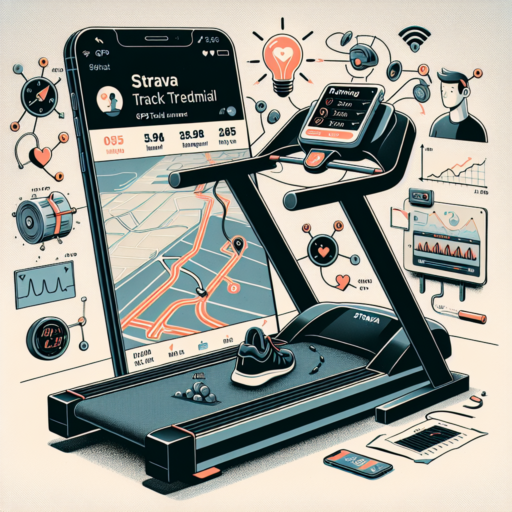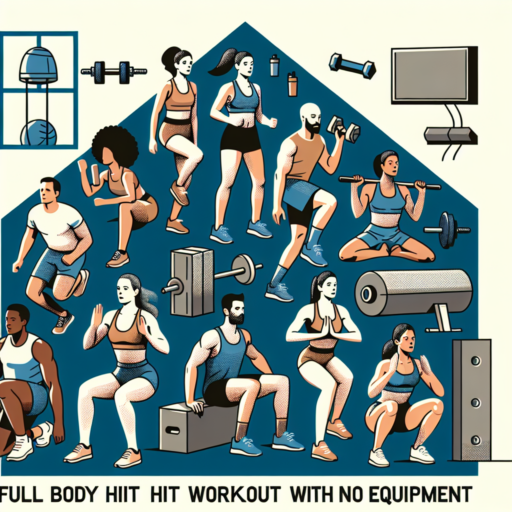Introduction to Tracking Treadmill Workouts on Strava
When it comes to recording and analyzing your fitness journey, Strava stands out as a comprehensive platform for athletes and fitness enthusiasts alike. Its ability to track a wide array of activities makes it a favorite among runners, cyclists, and triathletes. However, many users wonder about the feasibility of tracking indoor activities, particularly treadmill workouts, on Strava. This introduction aims to shed light on how Strava users can effectively monitor their progress, even when hitting the treadmill indoors.
Traditionally, Strava’s core functionality centered around GPS tracking, ideal for outdoor runs and rides. The challenge with treadmill workouts arises due to the lack of GPS data, prompting users to seek alternative methods to ensure their indoor running efforts are not left unrecorded. Fortunately, Strava has evolved, offering several avenues through which treadmill activities can be logged and tracked with a fair degree of accuracy. This not only helps in keeping a comprehensive record of all workouts but also in maintaining motivation and fostering a sense of community among users by sharing their indoor achievements.
Despite the initial hurdles of indoor workout tracking, Strava users have discovered creative workarounds and integrated technologies to bridge the gap. These include the use of foot pods, smart watches, and other sensors that can be synced with the Strava app to report on speed, distance, and even heart rate during a treadmill run. The integration of such devices with Strava enhances the indoor running experience, allowing for a more detailed analysis of performance over time. Understanding the best practices for treadmill workout tracking on Strava not only enriches the user experience but also ensures that every step taken indoors contributes towards personal fitness goals.
How Does Strava Handle Indoor Running?
Strava, the popular fitness tracking app, has adapted to the diverse needs of runners, including those who prefer or are confined to indoor running. Understanding the mechanics behind Strava’s handling of indoor running activities can offer insights into how it serves a broad spectrum of the running community. This part of Strava’s functionality caters to individuals who run on treadmills or in other indoor setups, ensuring their efforts are tracked and recognized just as outdoor activities are.
Tracking Indoor Running on Strava
Strava utilizes the motion and health data from your smartphone or paired devices, such as GPS watches and foot pods, to track your indoor running sessions. When running indoors, GPS data—which tracks location and distance outside—is not available. Instead, Strava estimates your distance based on the step count or the treadmill data input manually by users. This approach allows runners to log their indoor workouts accurately, fostering a comprehensive view of their training progress.
Accuracy and Limitations
The accuracy of Strava’s indoor running data can vary based on the device used and the quality of the input data. For instance, using a foot pod that measures steps and cadence can offer detailed insights into your pace, distance, and overall workout intensity. However, manually inputting data requires careful entry of the treadmill’s speed and duration, which may not fully capture the intricacies of one’s indoor run. To enhance the accuracy, Strava encourages the use of compatible devices that can automatically sync indoor running activities.
While Strava endeavors to bridge the gap between outdoor and indoor running experiences, it’s important for users to understand the platform’s current capabilities and limitations. By leveraging available technology and providing accurate data inputs, indoor runners can effectively use Strava to monitor their training, set goals, and engage with a global community of athletes.
Step-by-Step Guide to Logging Treadmill Runs on Strava
Logging treadmill runs on Strava is a simple way to keep all your running data in one place, allowing you to track your progress over time. Whether you’re training for a marathon or just trying to stay active, recording your indoor workouts helps maintain an accurate record of your efforts. Follow this guide to ensure your treadmill activities are accurately captured.
Manually Adding Your Treadmill Run
To add a treadmill run to Strava, begin by opening the Strava app on your smartphone or by navigating to the Strava website on your computer. Look for the «+» icon typically found at the bottom right corner (on the app) or the top right corner (on the website) of your screen. Click on it and select «Manual Activity» from the dropdown menu. Here, you can enter the details of your treadmill run, including duration, distance, and effort level. While manual entries won’t capture data like heart rate or elevation gain, they are invaluable for keeping consistent exercise logs.
Using a Compatible Fitness Tracker
If you prefer a more automated approach to recording your treadmill runs, using a compatible fitness tracker with Strava is your best bet. Devices from brands like Garmin, Fitbit, and Polar can automatically sync your indoor runs to Strava. Before starting your run, ensure your device is connected to Strava and that it’s set to record treadmill or indoor running. This method usually provides more detailed data, including pace, heart rate, and sometimes even stride length, offering a comprehensive overview of your performance.
Regardless of the method you choose, the key to successful treadmill run logging on Strava is consistency. Regularly inputting your runs allows you to more accurately track your progress, set realistic goals, and challenge yourself over time. Remember, every step counts towards building a healthier, more active lifestyle.
Connecting Your Treadmill to Strava: Is it Possible?
Many avid runners and fitness enthusiasts who split their time between outdoor runs and indoor treadmill sessions often wonder if their treadmill workouts can be seamlessly integrated into Strava, their go-to platform for tracking exercise and competing with friends. Strava, known for its robust outdoor activity tracking, poses a unique question for those preferring or limited to indoor runs: can your treadmill be connected to Strava, translating your indoor efforts into the digital world?
The short answer is, yes, connecting your treadmill to Strava is indeed possible, but the process isn’t as straightforward as outdoor run tracking. This capability primarily depends on the technology your treadmill supports and the intermediary devices or apps you might need to bridge the gap. Modern treadmills equipped with Bluetooth can directly sync with fitness apps that are compatible with Strava, or alternatively, data can be manually uploaded to Strava after your run. However, the integration process might vary significantly based on the treadmill brand and the model you own.
For those wondering how to initiate this connection, using third-party apps like Zwift or RunSocial can be an effective way to link your indoor running sessions to Strava. These applications not only help in making your treadmill workouts more engaging by offering virtual running experiences but also automatically sync your activity data with Strava. This method ensures that each mile you run indoors is accounted for, pushing you closer to your fitness goals while maintaining an accurate log of your progress on Strava.
The Role of GPS in Strava’s Treadmill Tracking
GPS technology has become a cornerstone in how fitness apps, like Strava, monitor outdoor activities. However, when it comes to treadmill tracking, the story takes an interesting turn. Strava utilizes GPS to enhance its tracking capabilities, but treadmill runs, by nature, pose a unique challenge for GPS functionality. Given that the runner is stationary in terms of geographical location, Strava has adapted its use of GPS data to complement treadmill tracking, ensuring users can still benefit from precise and consistent activity logging.
At its core, Strava’s approach to treadmill tracking without direct GPS movement involves the integration of indoor running data. Users can manually input their treadmill workouts, including distance and time, which Strava then uses to estimate effort and performance. While GPS data might not be directly involved in the capturing of indoor runs, it plays a crucial role in calibrating outdoor runs. This calibration helps in making the transition between outdoor and indoor activities seamless, allowing Strava to offer a comprehensive view of a user’s fitness journey.
Moreover, for devices that are capable, Strava leverages GPS to track the user’s location before and after the treadmill session. This aspect of GPS utilization aids in providing a context to the workout, giving insights into pre and post-run movements that might be indicative of warm-up and cool-down practices. Such insights enrich the user’s data, making their fitness tracking more holistic and informative.
Improving the Accuracy of Treadmill Distance on Strava
When striving to improve the accuracy of treadmill distance on Strava, it’s essential to understand the factors that contribute to discrepancies in the data recorded. The nature of indoor running presents unique challenges compared to outdoor sessions, primarily due to the lack of GPS data. Strava relies heavily on GPS to measure distance and pace, but when running on a treadmill, this data is not available. This means the app has to estimate your performance based on the information it receives from connected devices or manual inputs, which can sometimes lead to inaccuracies.
Calibrate Your Devices
One effective strategy to enhance accuracy is calibrating your devices before starting your workout. If you use a foot pod or a smartwatch, ensure it’s properly set up according to the manufacturer’s instructions. Calibration helps these devices more accurately measure your steps and stride length, which in turn improves the distance estimates relayed to Strava. It’s a simple step that can make a significant difference in the accuracy of the data recorded.
Using External Apps and Devices
Another approach to improving accuracy involves the use of external apps and devices that are compatible with Strava. Some treadmills can directly sync with Strava, providing a more accurate representation of your workout. Additionally, third-party apps can bridge the gap between your treadmill and Strava, capturing precise data on pace, distance, and even elevation. Using these tools enhances the likelihood of achieving more reliable data about your indoor running sessions.
To tackle the issue of accuracy head-on, it’s also helpful to periodically revise and manually correct your treadmill activities on Strava. While the platform offers automatic adjustments for activities, manually checking and adjusting your runs ensures the data reflects your actual performance. This tactic is particularly useful for dedicated runners aiming to track their progress meticulously over time. Ultimately, combining device calibration, the utilization of compatible apps and devices, and regular manual checks presents a comprehensive strategy for improving the accuracy of treadmill distances on Strava.
Using Third-Party Apps to Sync Treadmill Runs with Strava
When it comes to tracking and documenting treadmill runs, many athletes turn to Strava for its comprehensive analytics and community features. However, directly syncing treadmill activities to Strava can be a challenge, as many treadmills do not offer native support for this platform. Thankfully, third-party apps offer a practical workaround, enabling users to bridge this gap and maintain a comprehensive record of their indoor running achievements.
One of the most popular solutions involves using fitness tracking apps that are compatible with both the treadmill and Strava. Apps like Zwift and Rouvy can connect to many modern treadmills via Bluetooth, capturing data from each run before seamlessly syncing it with a user’s Strava account. This process not only ensures that all workout data is accurately recorded but also allows runners to engage with Strava’s social features, such as participating in challenges, sharing achievements, and competing with friends.
For a more detailed analysis of treadmill workouts, some runners opt for devices such as foot pods and smartwatches. These devices measure metrics like cadence, step length, and pace, providing a richer dataset for each run. Once connected to a compatible third-party app, this detailed information can be synced with Strava, offering insights that go beyond what is typically available from treadmill data alone.
Strava’s Features for Runners: Beyond the Treadmill
Strava has long been celebrated as a virtual haven for runners, offering a myriad of features that go well beyond the monotonous motion on a treadmill. This app has deeply entrenched itself into the runner’s daily routine, thanks not only to its basic tracking capabilities but also to its socially engaging and motivational features. Here, we explore how Strava enriches the running experience with its robust functionality designed explicitly for the pavement pounders and trail blazers alike.
Comprehensive Tracking and Analysis
One of the cornerstones of Strava’s appeal lies in its sophisticated tracking and analysis tools. Runners can dive into detailed metrics about their runs, including pace, distance, elevation gained, and a heart rate analysis when compatible devices are connected. This data is meticulously organized, offering insights into performance trends over time. The feature that truly stands out is the Segment tool. This allows users to compare their efforts on specific sections of their routes with their past performances and those of other runners, injecting a competitive edge into solitary runs.
Social Connectivity and Challenges
Strava isn’t just about the numbers; it’s also about the community. The platform excels in knitting a tight-knit community of runners. Features like Clubs allow users to join groups of like-minded individuals, share routes, tips, and experiences, and even organize meet-ups or virtual races. Additionally, Strava’s Challenges motivate runners to push their boundaries by participating in various contests, ranging from running a certain distance to climbing a cumulative elevation, adding a layer of fun and motivation to regular training routines.
Route Discovery and Adventure
Lastly, for runners looking to break the monotony of their usual paths, Strava offers invaluable resources for discovery and adventure. The Route Planning feature suggests tracks based on the user’s location, preferred distance, and terrain, encouraging exploration of new trails and roads. Paired with Heatmaps, which show the most popular paths taken by other runners, individuals can safely veer off their beaten tracks, find new challenges, and enjoy fresh scenery, all while remaining connected and motivated through the Strava community.
Tips and Tricks for Effective Treadmill Tracking on Strava
When incorporating treadmill activities into your Strava routine, understanding the nuances of tracking can significantly enhance the accuracy and enjoyment of your indoor runs. This digital platform, primarily designed for outdoor activities, can still offer an excellent experience for those preferring the treadmill with a few adjustments and considerations.
Optimize Your Device Setup
Firstly, it’s crucial to ensure your wearable device or smartphone is optimally set up for indoor tracking. While GPS tracking is redundant indoors, many smartwatches and fitness trackers offer a “Treadmill” or «Indoor Running» mode. Before starting your session, select this mode to allow the device to estimate your distance traveled based on arm movements or step counts. It’s also beneficial to regularly update your device’s firmware to enhance its tracking accuracy.
Manual Entry and Calibration
Another key aspect is understanding when to rely on manual entries. If you notice significant discrepancies between the treadmill’s data and what’s recorded on Strava, consider manually logging your runs. Include details like duration, distance, and pace. Moreover, taking the time to calibrate your device with your treadmill’s data can improve future tracking accuracy. Some devices allow you to adjust the stride length or manually match the distance after a run, enhancing the overall data quality on Strava.
Lastly, leveraging external sensors such as foot pods can offer a substantial upgrade in tracking performance. These sensors, when paired with your device, provide more precise measurements by tracking your movements directly from your feet, resulting in a closer approximation of your actual distance and pace. Incorporating these approaches can significantly refine your treadmill tracking on Strava, making each indoor run as rewarding and insightful as those enjoyed outdoors.
Conclusion: Getting the Most Out of Your Treadmill Runs with Strava
Maximizing the benefits of your treadmill workouts with Strava is not only about tracking; it’s about enhancing your fitness journey. Strava, when used to its full potential, can transform mundane treadmill runs into a data-rich, engaging, and community-connected experience. By diving into the depth of Strava’s capabilities, runners can uncover insights that were previously untapped, pushing their limits further than they thought possible.
Firstly, leveraging Strava’s detailed analytics can provide a wealth of information about your treadmill runs. These insights go beyond just distance and pace; they encompass heart rate metrics, performance analysis, and personal bests. By understanding these metrics, you can tailor your training to be more effective, focusing on areas that need improvement. Additionally, integrating Strava with compatible treadmills can ensure your indoor runs are accurately tracked and contribute to your overall training logs, making every step count towards your fitness goals.
Moreover, the social aspect of Strava cannot be underestimated. Joining challenges and connecting with friends adds a layer of motivation and competition that can drive you to elevate your performance. Sharing your treadmill runs on Strava enables you to be part of a global community of runners, offering support and drawing inspiration. It’s this sense of community and shared purpose that can make the difference between hitting a plateau and breaking through to new personal bests.










